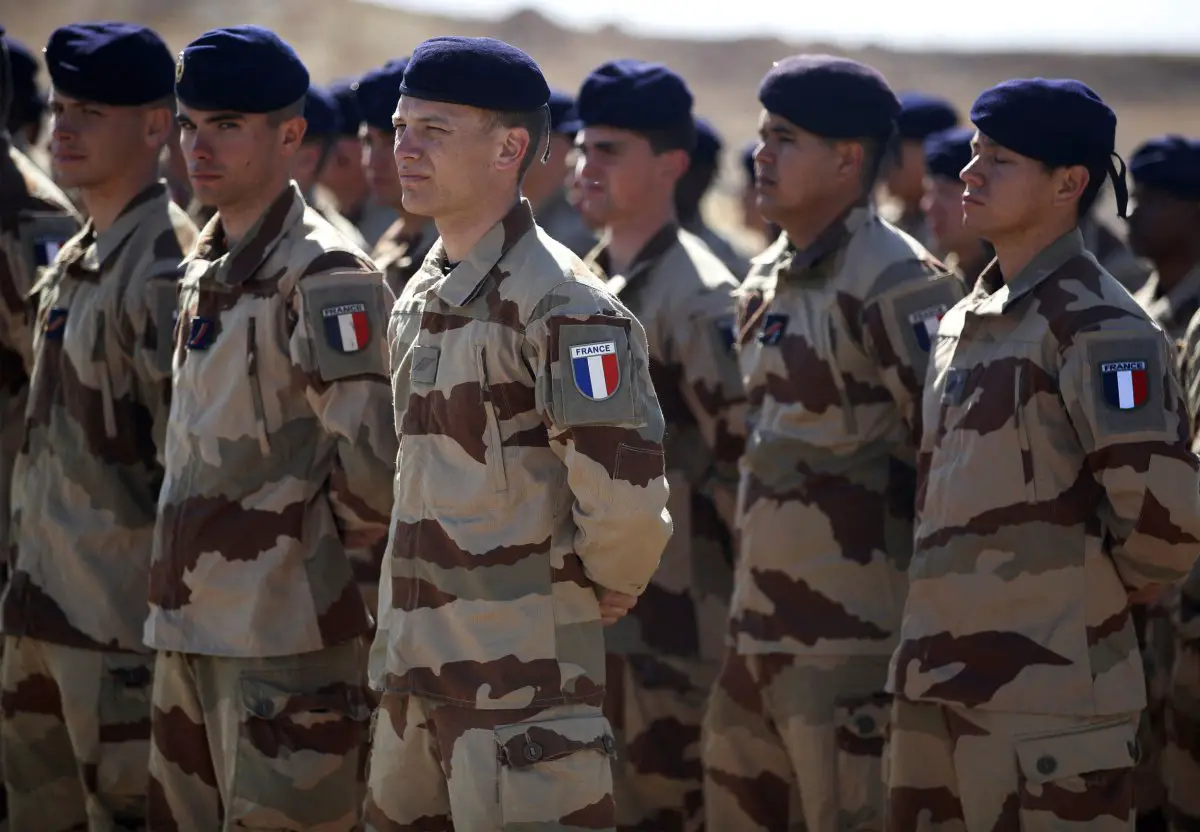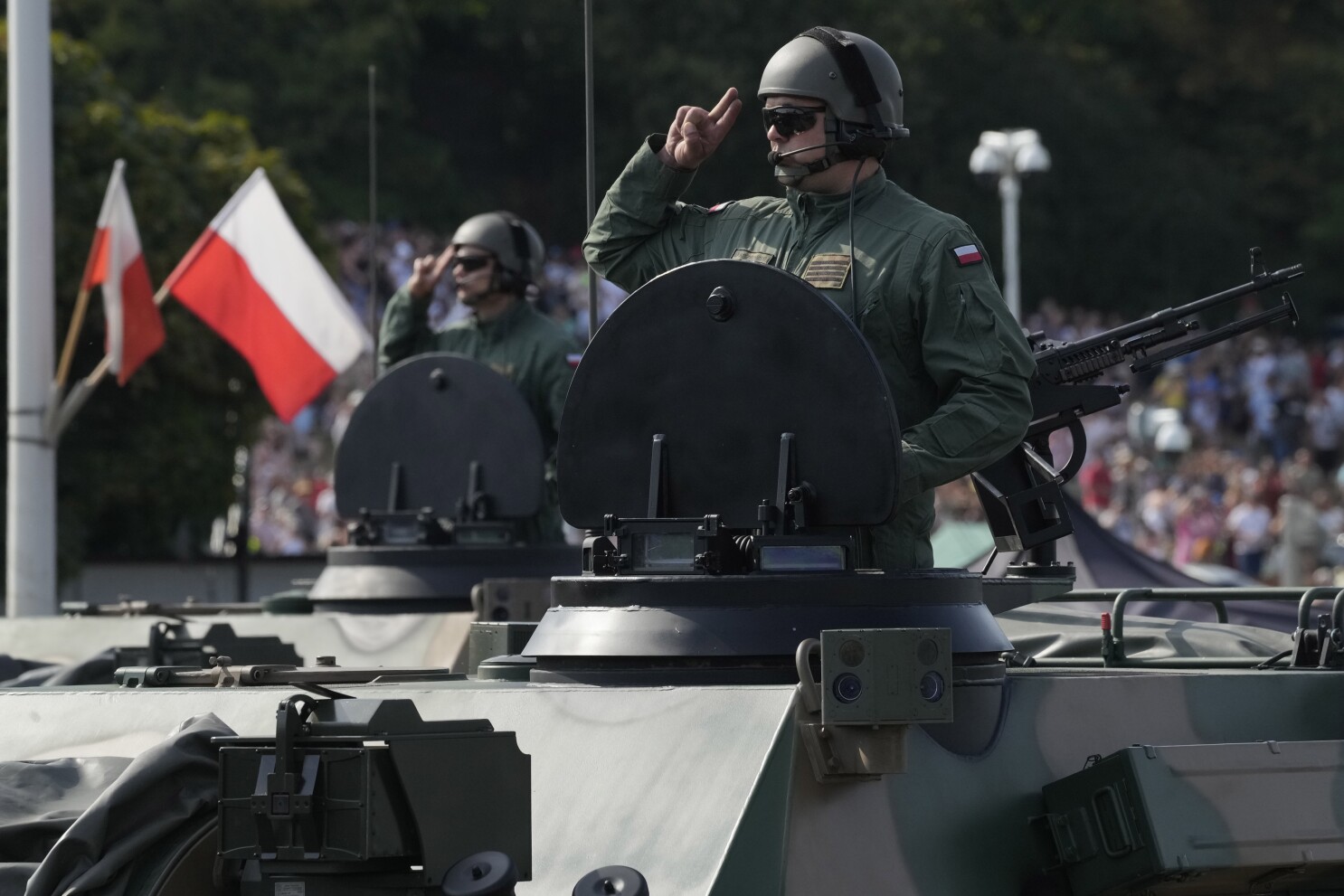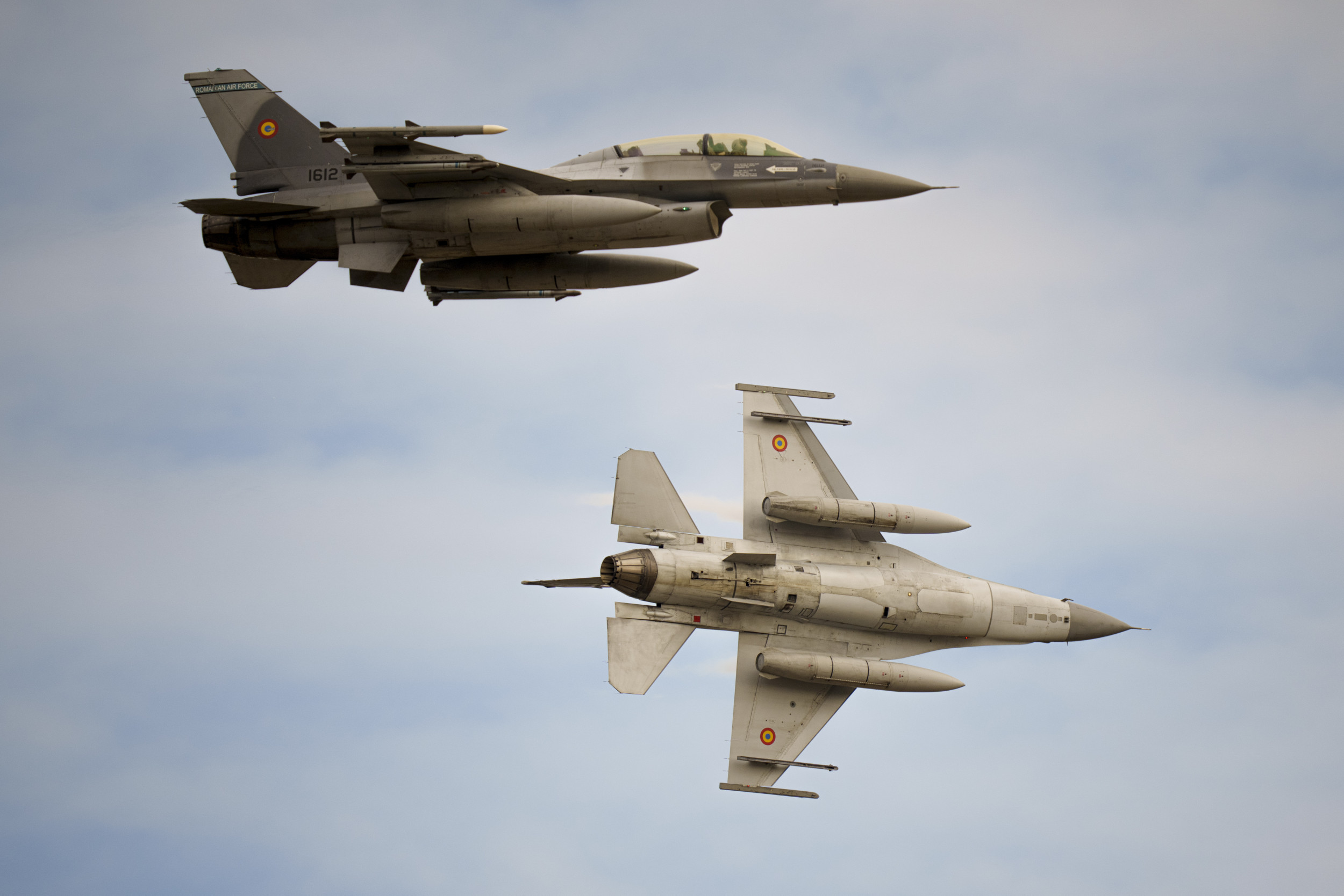As the war in Ukraine rages on, the urgency of securing not just Ukraine but all of Europe becomes glaringly clear. Russia’s aggression has reshaped the security landscape in Eastern Europe, underscoring a pivotal truth: the longer Ukraine remains outside NATO, the more vulnerable Europe is to the destructive ambitions of Moscow. The time for hesitation is over—Ukraine’s admission to NATO is no longer a matter of debate but a strategic necessity. The defense of Europe, its stability, and the future of democratic values depend on it.
The NATO alliance, founded on the principles of collective defense and mutual security, faces a historic moment of decision. With Ukraine standing as the frontline against Russian expansionism, NATO’s credibility and the safety of Europe hang in the balance. While current NATO policies prevent a country in active conflict from joining the alliance, this rule risks turning Russia’s war into a de facto veto on Ukraine’s accession—playing into Putin’s hands. For the safety of Europe and the preservation of the rules-based international order, NATO must admit Ukraine into its ranks without further delay. The longer NATO stalls, the greater the risks to European security and global stability.
The Bulwark Against Russian Aggression
Ukraine’s geographical position has always made it a crucial player in European security. As a buffer state between Russia and NATO’s eastern borders, Ukraine’s fate directly affects the security of the entire European continent. The full-scale Russian invasion of Ukraine in February 2022 shattered the illusion that Europe’s post-Cold War order was stable. Putin’s war of aggression was a stark reminder that Russian imperial ambitions remain alive and well, and Ukraine’s resilience has been the key to containing those ambitions.
By keeping Russian forces bogged down in Ukraine, Kyiv is performing a vital service not only for itself but for all of Europe. If Ukraine falls, the consequences for Europe’s eastern neighbors—Poland, the Baltic states, and Romania—would be catastrophic. NATO’s eastern flank would be exposed to a vengeful and emboldened Russia, hungry to reassert control over former Soviet territories. Ukraine’s membership in NATO would close this strategic vulnerability, anchoring the eastern edge of Europe’s defense against any further Russian aggression.
Critics argue that admitting Ukraine into NATO would escalate the conflict, provoking Moscow and leading to broader warfare. However, this view overlooks the power of deterrence that NATO’s collective defense provides. Russia has consistently shown restraint when dealing with NATO member states, understanding that confrontation with NATO risks catastrophic consequences for its regime. By admitting Ukraine into NATO, the alliance would send a clear signal to Moscow: Europe’s borders are non-negotiable, and any attack on Ukrainian territory will be met with the full force of NATO’s military might.

How Russia Exploits NATO’s Hesitation
Russia’s war on Ukraine has placed NATO in a precarious situation. NATO’s current policy of not admitting countries engaged in conflict effectively hands Russia a strategic tool: by perpetuating war, Moscow can indefinitely block Ukraine’s membership in the alliance. This creates a dangerous precedent. If NATO fails to act decisively and fast-track Ukraine’s accession, Russia will have learned a valuable lesson: that war is a reliable method for halting NATO expansion.
This dynamic doesn’t just affect Ukraine—it endangers all countries aspiring to NATO membership and stability in the region. If Moscow succeeds in using conflict as a veto mechanism, it could replicate this tactic elsewhere, particularly in Moldova or Georgia. The security of Europe’s eastern borders becomes compromised as Russia exploits NATO’s hesitancy.
Allowing Ukraine to remain in limbo, outside the protective shield of NATO, leaves the country vulnerable to continued Russian aggression and creates an ongoing security crisis at Europe’s doorstep. NATO’s indecision weakens the alliance’s credibility, undermining its role as the guardian of peace and security in Europe. Worse still, it emboldens Russia to continue its war of attrition, gambling that the West will tire of the conflict and that divisions within NATO will prevent a unified response.
Ukraine’s prolonged exclusion from NATO also sends the wrong message to authoritarian regimes around the world. It suggests that aggression and force can dictate the rules of international engagement, further eroding the global security architecture that has kept peace in Europe for decades. If NATO is to remain the cornerstone of European security, it must demonstrate that it can adapt to new challenges—and admitting Ukraine is the clearest way to reaffirm its relevance and resolve.
Deterring Future Russian Aggression: A Stronger NATO Means a Safer Europe
The principle of collective defense, embodied in NATO’s Article 5, is the most powerful deterrent against state-sponsored aggression. The alliance’s track record of preventing conflicts through deterrence is well-documented: no NATO member has been attacked by Russia, despite Moscow’s frequent threats and provocations. Ukraine’s membership in NATO would dramatically change the calculus for Russia. No longer would Putin be able to operate under the assumption that Ukraine is a “grey zone” open to Russian intervention. NATO’s shield would decisively prevent further incursions.
Some argue that the inclusion of Ukraine would push Russia toward more reckless or even nuclear options. Yet, history demonstrates that Russia’s leadership is acutely aware of the consequences of escalating to a confrontation with NATO. Moscow has engaged in proxy wars and cyberattacks, but it has consistently avoided crossing the line that would trigger a NATO military response. By admitting Ukraine into NATO, the alliance would make it clear that any further aggression would cross that line—and force Russia to recalibrate its military and geopolitical strategy.
Ukraine’s battle-hardened military would also be a major asset to NATO. Throughout this war, Ukrainian forces have developed extensive knowledge of Russian tactics, strengths, and vulnerabilities. This experience would be invaluable to NATO as it continues to adjust its defense posture in response to Russian threats. Moreover, Ukraine’s military is already deeply integrated with NATO standards, thanks to years of cooperation, training, and equipment supplied by Western allies. Formalizing this relationship through membership would strengthen NATO’s collective capabilities while improving Europe’s security overall.

European Security Hinges on Ukraine’s NATO Membership
For Europe, the war in Ukraine is not a distant or isolated conflict; it is an existential threat to the peace and stability of the entire continent. Eastern Europe, in particular, is acutely aware of the stakes. Poland, the Baltic states, and other countries on NATO’s eastern front have been some of the strongest advocates for Ukraine’s membership. They understand that their security is directly tied to Ukraine’s ability to resist Russian aggression. Should Ukraine falter, these nations would likely be next in Moscow’s crosshairs, forcing NATO into a far more dangerous confrontation.
Furthermore, Ukraine’s admission would serve as a powerful signal of NATO’s commitment to the security and stability of all its members. The alliance would be reaffirming its foundational promise to defend Europe against external threats, no matter the cost. In doing so, NATO would not only protect its members but also prevent the expansion of authoritarian influence in the region. By standing firm against Russian aggression, NATO would ensure that the borders of Europe are not redrawn by force.
NATO’s Eastern Flank: Strengthened Security, Reduced Risks
Ukraine’s strategic position is critical to the defense of NATO’s eastern flank. Currently, NATO’s easternmost members—Poland, Lithuania, Latvia, and Estonia—are on the frontlines of potential Russian aggression. Ukraine, if admitted to NATO, would significantly bolster this flank, creating a wider buffer zone and reducing the risks of direct Russian attacks on NATO members.
Ukraine’s vast military potential, honed by years of defending against Russian aggression, would also be a major addition to NATO’s strength. Kyiv has demonstrated extraordinary resilience in the face of a far superior Russian military, proving that it can hold its own and defend its territory with strategic acumen and battlefield innovation. Integrating Ukraine’s military capabilities into NATO would not only enhance the alliance’s defensive posture but also contribute valuable operational experience in countering Russian military strategies.

A United Front Against Authoritarianism
Beyond the immediate military and security benefits, Ukraine’s admission into NATO would symbolize the West’s commitment to democracy and the rule of law in an era when authoritarian regimes are increasingly challenging these values. Ukraine has fought, both figuratively and literally, for its right to exist as a sovereign, democratic nation. Admitting Ukraine into NATO would be a powerful affirmation of the alliance’s founding principles: collective defense, shared democratic values, and the right of nations to choose their destinies.
Russia’s invasion of Ukraine is part of a broader assault on the post-World War II international order. Authoritarian powers like Russia and China are increasingly willing to use force and coercion to reshape the world to their liking, often at the expense of smaller, more vulnerable nations. By admitting Ukraine, NATO would be drawing a line in the sand, making it clear that aggression will not be rewarded, and that the West remains united in defending its values and its allies.
The message that NATO would send by admitting Ukraine cannot be understated: the alliance will not be cowed by threats of escalation, and it will stand by those who share its democratic ideals. This is not just about protecting one country’s borders—it is about preserving the very idea that nations have the right to determine their futures, free from external coercion or invasion.
The war in Ukraine has exposed the vulnerabilities of Europe’s security architecture, making it clear that Ukraine’s future and the future of European peace are inseparably linked. NATO cannot afford to wait any longer. Admitting Ukraine into the alliance is the only way to ensure the long-term stability and safety of Europe.
Ukraine’s membership in NATO would serve as a bulwark against Russian aggression, strengthen the alliance’s eastern defenses, and send a powerful message to the world about the West’s commitment to democracy and collective security. The risks of inaction are too great. The time to admit Ukraine into NATO is now—for the safety of Europe, for the future of democracy, and the stability of the international order.

Facing Russia’s Nuclear Threat, Cyber Attacks, and Military Aggression
As the war in Ukraine drags into its second year, the stakes for European and global security have never been higher. Russia’s unprovoked invasion of Ukraine in 2022 has not only destabilized Eastern Europe but also rekindled Cold War-era fears of nuclear confrontation, cyber warfare, and the possibility of conventional ground conflicts on NATO’s borders. As the West continues to support Ukraine through military aid, intelligence sharing, and economic sanctions on Russia, one crucial question looms larger than ever: should Ukraine be admitted into NATO?
The implications of admitting Ukraine into the NATO alliance are profound. While it would immediately strengthen Ukraine’s defense against Russian aggression by invoking NATO’s collective defense mechanism, Article 5, it also presents serious challenges—most notably the risk of provoking Russia’s multifaceted military machine. Moscow, having viewed NATO’s eastward expansion as an existential threat for decades, would likely escalate its threats in response, ranging from the use of nuclear weapons and cyberattacks to military provocations along NATO’s borders. The Kremlin may even deploy its nuclear submarines to more threatening positions in the Atlantic, heightening tensions across the West.
How NATO Can Deter Russia’s Nuclear Threats
While Russia’s nuclear threats are concerning, NATO has developed robust deterrence capabilities that can counteract Moscow’s nuclear bluster. The alliance’s nuclear umbrella, largely provided by the United States, ensures that any nuclear attack on a NATO member would result in a devastating retaliatory strike. This policy of “mutually assured destruction” (MAD) has successfully deterred nuclear conflict since the end of World War II.
Moreover, NATO’s deployment of advanced missile defense systems, such as the Aegis Ballistic Missile Defense (BMD) system and the deployment of NATO’s air-defense systems across Europe, enhances the alliance’s ability to intercept short- and medium-range missiles that Russia might employ in a nuclear confrontation. These capabilities provide an essential safeguard against Russia’s nuclear blackmail and reduce the likelihood that Moscow would follow through on its threats.
If Russia deploys tactical nuclear weapons near NATO territory, the alliance could respond by reinforcing its nuclear posture. This might include the pre-positioning of additional U.S. nuclear assets in Europe or conducting joint nuclear exercises with NATO allies to demonstrate the alliance’s readiness and resolve. These measures would make it clear to Moscow that any use of nuclear weapons would result in severe consequences, both for Russia’s military capabilities and its political leadership.
Critically, NATO’s diplomatic channels with Moscow must remain open. While the alliance should maintain a posture of strength, it must also communicate clearly to Russia that nuclear weapons are not an option, and any escalation would be catastrophic for both sides. Effective diplomacy, backed by credible military deterrence, can prevent a dangerous nuclear spiral and avoid a devastating conflict.

Russia’s Asymmetric Weapon
Russia has a well-established track record of using cyber warfare as an asymmetric weapon against its adversaries. Since the early 2000s, Moscow has employed cyberattacks to disrupt political processes, paralyze critical infrastructure, and spread disinformation across the West. The admission of Ukraine into NATO would almost certainly provoke an intensification of Russian cyberattacks, both against Ukraine itself and NATO member states.
Russia’s cyber capabilities are extensive and sophisticated. In 2017, the “NotPetya” cyberattack, attributed to Russian hackers, targeted Ukrainian businesses, government agencies, and financial institutions. The attack quickly spread beyond Ukraine, wreaking havoc on global supply chains and causing billions of dollars in damages worldwide. In the event of Ukraine’s admission to NATO, Russia could unleash similar cyberattacks, targeting critical infrastructure such as energy grids, communications networks, and financial systems in NATO countries, all while continuing its disinformation campaigns designed to sow discord and undermine Western unity.
NATO has recognized the growing importance of cyber defense in its strategic planning. Since 2016, cyberattacks have been officially classified as a potential trigger for invoking Article 5, meaning that a significant cyberattack on one NATO member could prompt a collective military response from the alliance. This sends a clear message to Russia that cyber warfare, while less visible than conventional military action, is still a serious provocation.
NATO must further strengthen its cyber defenses, both at the national and alliance-wide levels. This includes sharing intelligence on Russian cyber activities, coordinating responses to cyber incidents, and conducting joint exercises to simulate cyberattacks and test the alliance’s resilience. NATO’s Cooperative Cyber Defence Centre of Excellence (CCDCOE), based in Estonia, plays a vital role in this effort, providing member states with the expertise and tools needed to counter sophisticated cyber threats.
Member states must develop offensive cyber capabilities that can act as a deterrent. By demonstrating the ability to launch retaliatory cyberattacks against critical Russian systems—such as military communications, financial networks, or government infrastructure—NATO can raise the cost for Moscow of engaging in cyber warfare. Offensive cyber capabilities would not only deter Russian cyber aggression but also provide the alliance with the flexibility to respond to cyberattacks in real time, limiting the damage to critical infrastructure and minimizing the impact on civilian populations.
NATO must continue its efforts to combat disinformation and information warfare. Russia’s use of disinformation campaigns has been a key element of its hybrid warfare strategy, aimed at destabilizing Western democracies and undermining trust in NATO’s institutions. The alliance should enhance its strategic communications efforts, debunking Russian propaganda and promoting a unified narrative that highlights the benefits of Ukraine’s NATO membership for European security.
The Threat of Conventional Warfare
Russia could respond to Ukraine’s NATO membership by ramping up its conventional military presence along NATO’s eastern borders. Moscow has already deployed tens of thousands of troops in regions like Belarus and Kaliningrad, conducting large-scale military exercises designed to intimidate NATO and project power into the Baltic region. The admission of Ukraine into NATO could prompt an even greater Russian military buildup, increasing the risk of accidental clashes or deliberate provocations.
NATO has already taken significant steps to bolster its eastern defenses, particularly after Russia annexed Crimea in 2014. The Enhanced Forward Presence (EFP) initiative has seen NATO deploy multinational battlegroups to Estonia, Latvia, Lithuania, and Poland, providing a visible deterrent to Russian aggression. These forces, while relatively small, serve as a tripwire: any Russian attack on these battlegroups would immediately trigger a NATO response under Article 5.
In the event of Ukraine’s admission to NATO, the alliance should consider further expanding its troop presence along its eastern borders, including deploying additional battalions to the Baltic states, Poland, and Romania. Moreover, NATO should accelerate its plans for rapid-response forces, ensuring that the alliance can deploy additional troops quickly in the event of a crisis. The NATO Response Force (NRF), a high-readiness force of up to 40,000 troops, plays a key role in this strategy, providing a flexible and scalable option for responding to Russian provocations or troop movements.
Joint military exercises with Ukraine and other NATO members would also send a powerful message to Moscow. By conducting large-scale drills in Ukraine and the Baltic region, NATO can demonstrate its readiness to defend its newest member and discourage Russia from testing the alliance’s resolve. These exercises should simulate a range of scenarios, from defending against conventional ground invasions to responding to hybrid warfare tactics such as cyberattacks and disinformation campaigns.



